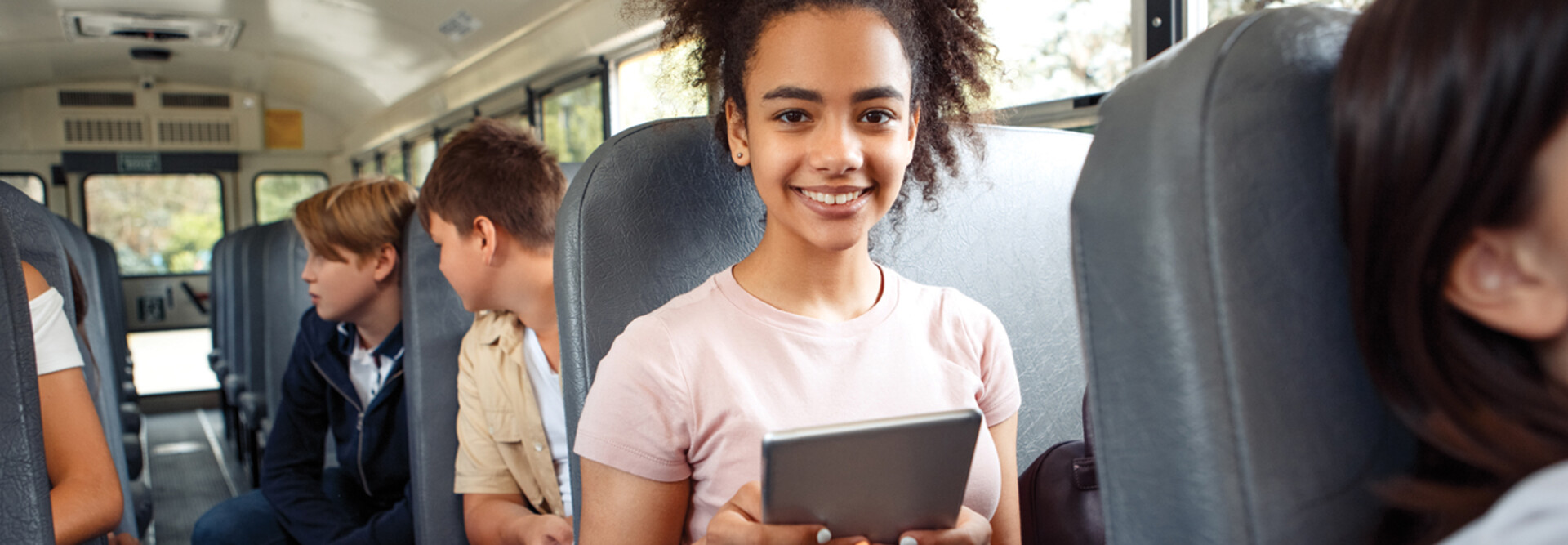If the equipment is newer, it may use WPA3, the latest standard, offering even stronger encryption. WPA3 includes individualized data encryption, which protects communication between each device and the network — even if someone intercepts the traffic — and forward secrecy so that even if a session is compromised, previously captured traffic can’t be decrypted.
However, because bus networks use cellular connections, they are exposed to the wider internet, with less segmentation and less security infrastructure compared with traditional, on-premises networks. This makes them more vulnerable to cyberattacks or unauthorized access. Additionally, a bus is easier to infiltrate physically, meaning bad actors can more easily gain access to the hardware supplying the Wi-Fi in the bus.
Protecting Against Cyberattacks on School Buses
Monitoring for a cyberattack on a school bus is largely the same as monitoring any other part of the school’s network. The tech support team should be able to use the same monitoring and detection tools to monitor for abnormal traffic patterns that could indicate an attack.
Abnormal behavior could involve large data uploads or downloads, multiple failed authentication attempts, device connections outside of normal usage hours, and access attempts originating from unusual geolocations.
KEEP READING: What should you look for in network monitoring tools?
Protecting the network itself starts with segmentation, followed by securing login information for Wi-Fi access. This could be through providing secure login information to the students or requiring them to ask the bus driver for the password.
The GPS and Security Camera Problem
An often-overlooked risk with this technology comes from the need to secure GPS or surveillance cameras on buses.
There are examples of GPS vendors exposing identifiable information and location information. A New York Times investigation exposed how it was possible to uncover an entire data set to track the movements of individuals commuting, going to school and generally going about their daily routines. Unfortunately, if someone intends to do harm to students, they could hack into the system to access this information, giving them knowledge of all the bus routes and who is typically on each bus. Schools need to hold vendors accountable for securing this information.
MAC address filtering can ensure that only specific, preapproved devices (such as the GPS and surveillance cameras) can connect to the critical virtual LAN. By maintaining an approved list of MAC addresses for the GPS and camera systems, unauthorized devices cannot connect to the same network, reducing the chance of spoofing or tampering.
Compliance with Student Data Protection Laws
There’s no completely foolproof way to guarantee compliance with student data protection laws, but a multilayered approach can ensure proper handling of student data.
WATCH THE VIDEO: Cybersecurity is like an onion.
First, several measures need to be implemented for schools to be in compliance with the Children’s Internet Protection Act. This requires schools to filter inappropriate content based on students’ ages and grade levels, ensuring safe browsing. Also, time-based controls should be used to manage access at specific times, such as during school or homework hours.
Schools should also maintain detailed logs so internet activity can be tracked for compliance audits and reporting. These measures are vitally important to safeguard students and allow them to access learning resources safely.
Overall, it’s vital to secure school bus Wi-Fi networks to cope with the digital divide for millions of students while protecting their data and ensuring a safe online experience. With the right encryption standards, such as WPA2 or WPA3, as well as by using network segmentation and content filtering in compliance with CIPA, schools can safeguard their students against cyberattacks and inappropriate content.
Additionally, proper monitoring systems and vendor accountability are important for protecting sensitive data from devices such as GPS trackers and security cameras. If schools can implement these security measures, they can safely extend learning opportunities while maintaining compliance with student data protection laws.











